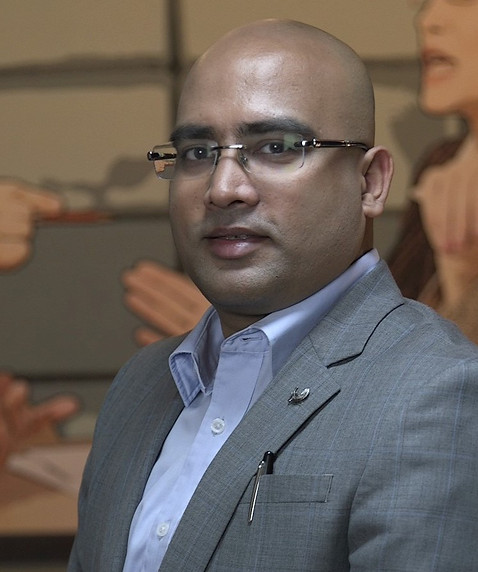1. Regulatory Updates
1.1. India
Reserve Bank of India (RBI)
1.1.1. RBI posts Annual Report for the year 2024-25
According to the Annual Report 2024–25 released by the Reserve Bank of India (“RBI”), the central bank posted a record surplus transfer of INR 2.69 Lakh Crore (Indian Rupees Two Lakh Sixty-Nine Thousand Crore only) to the Government of India, driven by an 8.2 per cent (eight point two per cent) increase in its balance sheet and a 27 per cent (twenty-seven per cent) rise in income. The gains were underpinned by higher global interest rates and strategic foreign exchange operations. The report covers the working and functions of the Reserve Bank of India for the period April 2024 – March 2025.
The Securities and Exchange Board of India (SEBI)
1.1.2. SEBI revises investor charter for investment advisors
The Securities and Exchange Board of India (“SEBI”), in view of recent market developments such as the launch of the Online Dispute Resolution platform and SCORES 2.0, has modified the Investor Charter for Investment Advisors to enhance financial consumer protection, financial inclusion, and investor literacy. Pursuant to consultations with the Industry Standards Forum for Research Analysts, SEBI has directed Bombay Stock Exchange (BSE) Limited (recognised as RAASB) to instruct Investment Advisors to disclose the updated charter prominently on websites, mobile applications, and office premises and share it with all clients during the onboarding process and via email or letters.
The International Financial Services Centres Authority (IFSCA)
1.1.3. IFSCA Introduces Amendments to AML/CFT/KYC Guidelines, 2022
The International Financial Services Centres Authority (“IFSCA”), vide Circular No. F. No. IFSCA-DAC/7/2024-AMLCFT/01 dated June 05, 2025, has issued amendments to the AML/CFT/KYC Guidelines, 2022, aligning them with the revised Prevention of Money Laundering Rules, 2024. Key changes include removal of ‘city council tax receipts’ as acceptable proof of address, additional requirements for bank and foreign bank statements as address proof, and mandatory retrieval of KYC records from the Central KYC Records Registry (CKYCR) with specified exceptions. New clauses mandate uploading updated KYC data to CKYCR within seven days, and notification protocols for regulated entities. These amendments expand applicability across various financial intermediaries in the IFSC, reinforcing robust due diligence and compliance standards.
1.1.4. IFSCA Amends ITC(HS) Codes for Import of Gold and Silver through IIBX
IFSCA, vide Circular No. IFSCA-DMC/3/2023-Dept. of Metals and Commodities dated June 02, 2025, has implemented amendments to the ITC(HS) codes applicable to the import of gold and silver, following the Directorate General of Foreign Trade’s notification dated May 19, 2025. These amendments take immediate effect and aim to streamline imports for qualified jewellers and financial entities under the Finance Act, 2025. Key revisions include authorisation for qualified jewellers to import gold under ITC(HS) Code 71081210 and silver grains under 71069120, with unrestricted import of silver bars (71069221) subject to RBI regulations.
1.1.5. IFSCA Releases Draft Revamped Regulatory Framework for Global Access in the IFSC
IFSCA on May 30, 2025, issued a Revised Consultation Paper dated May 08, 2025, proposing a comprehensive overhaul of its regulatory framework governing Global Access in the International Financial Services Centre (“IFSC”). The Revamped Framework aims to strengthen the regulatory architecture facilitating cross-border securities and financial product transactions via broker-dealers and intermediaries within the IFSC. Key objectives include formalising pathways for entities currently operating unregulated access to global markets in India to transition into a compliant IFSC-regulated environment, and safeguarding Indian retail investors, especially those investing under the Liberalised Remittance Scheme.
1.1.6. Monetary Penalties
RBI imposes monetary penalties on the following financial institutions:
| Name of the Financial Institution | Penalty Imposed | Reasons |
| RBI imposes monetary penalty on The Citizen Co-operative Bank Ltd., Noida | INR 6,00,000 (Indian Rupees Six Lakh only) | Non-compliance with Know Your Customer (“KYC”) directions. |
| RBI imposes monetary penalty on The Jammu and Kashmir State Co-operative Bank Ltd., Srinagar | INR 2,00,000 (Indian Rupees Two Lakh only) | Non-compliance with KYC directions. Pursuant to inspections conducted by NABARD, RBI found that the Bank failed to obtain Officially Valid Documents (“OVDs”) while establishing account-based relationships. |
| RBI imposes monetary penalty on Khush Housing Finance Private Limited, Mumbai | INR 16,000 (Indian Rupees Sixteen Thousand only) | Non-compliance with Know Your Customer (“KYC”) directions. |
| RBI imposes monetary penalty on India Home Loan Ltd., Mumbai | INR 32,000 (Indian National Rupees Thirty-Two Thousand only) | Non-compliance with Know Your Customer (“KYC”) directions. |
| RBI imposes monetary penalty on The Adilabad District Co-operative Central Bank Ltd. | INR 1,00,000 (Indian Rupees One Lakh only) | For sanctioning loans to its directors, in contravention of Section 20 read with Section 56 of the Banking Regulation Act, 1949. |
| RBI penalises Ratanchand Shah Sahakari Bank Limited for KYC and SAF breaches | INR 2,00,000 (Indian Rupees Two Lakh only) | Non-compliance with specific directions issued under the Supervisory Action Framework (SAF) and certain directions on KYC. |
| RBI levies penalty on Poornawadi Nagarik Sahakari Bank for LTV and KYC lapses | INR 1,00,000 (Indian Rupees One Lakh only) | Violations of RBI directions on Management of Advances – UCBs and KYC norms. The bank sanctioned gold loans exceeding prescribed Loan to Value (LTV) limits and failed to upload customer KYC data in a timely manner to the Central KYC Records Registry (CKYCR). |
| RBI imposes monetary penalty on PayMe India Financial Services Private Limited for regulatory non-compliance | INR 2,00,000 (Indian Rupees Two Lakh only) | Breaches of specific conditions of its Certificate of Registration (CoR) under Section 45IA(5) of the RBI Act, 1934 and non-compliance with provisions of the Master Direction – Non-Banking Financial Company – Non-Systemically Important Non-Deposit taking Company (Reserve Bank) Directions, 2016 read with the Reserve Bank of India (Non-Banking Financial Company – Scale Based Regulation) Directions, 2023 |
2. Key Asian Markets – Indonesia & Vietnam
2.1. Indonesia
2.1.1. Indonesia’s broad money growth moderates to 5.20 per cent in April 2025
According to Bank Indonesia (BI), broad money (M2), a key indicator of liquidity in the economy, expanded by 5.20 per cent (five point two zero per cent) year-on-year in April 2025, moderating from 6.10 per cent (six point one zero per cent) in March 2025. The total money supply stood at IDR 9,390 trillion (Indonesian Rupiah Nine Thousand Three Hundred Ninety Trillion only), driven by narrow money (M1) growth of 6 per cent (six per cent) and quasi-money growth of 2.4 per cent (two point four per cent). Loan disbursements supported liquidity, growing by 8.5 per cent (eight point five per cent) YoY. However, net claims on the central government contracted sharply by 21 per cent (twenty-one per cent), offsetting gains. Net foreign assets also slowed to 3.6 per cent (three point six per cent) growth.
2.2. Vietnam
2.2.1. SBV announces ‘Digital Transformation Event 2025’ for banking sector
The State Bank of Vietnam (SBV) hosted its 2025 Digital Transformation Event themed “Smart Digital Ecosystem in the New Era” to reinforce its leadership in the national digital agenda. SBV Governor Nguyen Thi Hong underscored data as central to innovation, highlighting achievements including digitisation of core services, 95 per cent (ninety-five per cent) online transaction share, and 87 per cent (eighty-seven per cent) bank account penetration. SBV launched a VND 500,000 Billion (Vietnamese Dong Five Hundred Thousand Billion only) credit programme for digital infrastructure projects.
3. Trends
3.1. Tata Electronics eyes Malaysian chip fab acquisition to scale India ops
According to The Economic Times, Tata Electronics is in advanced discussions to acquire a semiconductor fabrication or Outsourced Semiconductor Assembly and Test (OSAT) plant in Malaysia, as part of its strategy to build technical capabilities ahead of launching chip assembly operations in India. Discussions are reportedly ongoing with X-Fab, DNeX, and Globetronics. The initiative is spearheaded by KC Ang, recently appointed President and Head of Tata Semiconductor Manufacturing, who brings over three decades of experience in the global foundry sector.
3.2. Zepto delays IPO plans to focus on profitability
Zepto Private Limited, formerly known as Kiranakart Technologies Private Limited, has reportedly deferred its Initial Public Offering (“IPO”) timeline by a year, targeting a listing in 2026 instead of the current calendar year. As per Moneycontrol, the quick commerce platform is prioritising a reduction in cash burn and an enhancement of its profitability profile before proceeding with its listing ambitions. The decision to postpone follows a strategic rebranding exercise undertaken in April 2025.
4. Business Updates
4.1. Meesho approves INR 411 crore bonus issue in run-up to IPO
SoftBank-backed e-commerce platform Meesho has approved a bonus issue of INR 411.23 Crore (Indian National Rupees Four Hundred Eleven Crore and Twenty-Three Lakh only) ahead of its planned initial public offering. On 30th May 2025, the board sanctioned the issuance of fully paid-up equity shares at INR 3 (Indian National Rupees Three only) each in a 1:1 ratio, utilising the securities premium account. The non-dilutive move aims to enhance share liquidity and affordability. Meesho, backed by Prosus and Elevation Capital, is expected to file its DRHP with SEBI within the current financial year.
4.2. Flipkart secures NBFC licence from RBI; becomes first Indian e-commerce platform to lend directly
Flipkart Internet Private Limited, backed by Walmart and last valued at USD 37 Billion (United States Dollar Thirty-Seven Billion only) in 2024, has obtained a Non-Banking Financial Company (“NBFC”) licence from the RBI, allowing it to offer loans directly to customers. The licence, granted in March 2025, positions Flipkart as India’s first e-commerce company with direct lending capabilities and an operational model previously facilitated only through bank and NBFC partnerships. The development aligns with Flipkart’s ongoing strategy to shift its holding company from Singapore to India, ahead of its planned IPO.
4.3. LoanTap raises INR 74 Crore to scale MSME supply chain financing
LoanTap Financial Technologies Private Limited (“LoanTap”) has secured INR 74 Crore (Indian National Rupees Seventy-Four Crore only) in a pre-Series C round, comprising INR 54 Crore (Indian National Rupees Fivety-Four Crore only) in equity led by July Venture. Existing investors, including 3one4 Capital, Avaana Capital, Kae Capital, and Swapurna Family Office, also participated.
4.4. Starlink to receive GMPCS licence for satellite services in India
Starlink, the satellite internet venture promoted by Elon Musk, is set to receive a Global Mobile Personal Communication by Satellite (“GMPCS”) licence from the Department of Telecommunications (DoT) after a three-year wait. As per The Times of India, Starlink has complied with revised licence conditions, including payment of statutory fees, and is aligned with operational and regulatory guidelines issued by the Government of India. Company officials are expected in New Delhi shortly to complete the formalities.
4.5. UPI transactions surge to 18.68 billion in May 2025, marking steady MoM and YoY growth
Unified Payments Interface (“UPI”) transactions rose by 4.4 per cent (four point four per cent) month-on-month to reach 18.68 (eighteen point six eight) billion in May 2025, up from 17.89 (seventeen point eight nine) billion in April, per National Payments Corporation of India (NPCI) data. On a year-on-year basis, transaction volume saw a 33 per cent (thirty-three per cent) jump. Total transaction value stood at INR 25.14 Lakh Crore (Indian National Rupees Twenty-Five Lakh Fourteen Thousand Crore only), a 5 per cent (five per cent) increase over April. PhonePe and Google Pay maintained a combined 83 per cent (eighty-three per cent) market share.
4.6. Cloud payments to AWS not taxable as royalty or technical fees, rules Delhi High Court
The Delhi High Court has held that payments made by Indian entities to Amazon Web Services (“AWS”) for cloud computing services are not taxable as royalty or fees for technical services under Article 12(3) of the India–United States Double Taxation Avoidance Agreement (India–US DTAA). The Court found that the services merely grant a non-exclusive, non-transferable license to access infrastructure and do not involve transfer of intellectual property. This judgment is a key precedent in cross-border digital tax matters.
4.7. IndiaAI compute capacity crosses 34,000 GPUs; three startups selected to develop indigenous models
The Ministry of Electronics and Information Technology (MEITY) announced that the total compute capacity under the IndiaAI mission has scaled up to 34,333 (thirty four thousand three hundred thirty thirty) Graphics Processing Unit (“GPUs”), with 15,916 (fifteen thousand nine hundred sixteen) new units onboarded through seven private providers at subsidised rates of INR 67 (Indian Rupees Sixty-Seven only) per GPU hour, significantly below the market average of INR 115 (Indian National Rupees One Hundred Fifteen only). The IndiaAI compute portal, operational since March 2025, currently offers access to 14,000 (fourteen thousand) GPUs. MEITY has also selected three startups to develop sovereign AI models as part of its push to build domestic AI infrastructure.
4.8. Centre eases SEZ norms to accelerate chips and electronics manufacturing
The Ministry of Commerce and Industry has notified amendments to the Special Economic Zones Rules, 2006 (SEZ Rules), significantly lowering land requirements to facilitate semiconductor and electronics manufacturing. The minimum area requirement for electronics and semiconductor units has been reduced. This regulatory shift aligns with the Centre’s broader strategy to enhance India’s electronics ecosystem, complementing the anticipated USD 4 Billion (United States Dollar Four Billion only) Design-Linked Incentive Scheme aimed at catalysing indigenous design capabilities
Disclaimer
The note is prepared for knowledge dissemination and does not constitute legal, financial or commercial advice. AK & Partners or its associates are not responsible for any action taken based on its contents.






